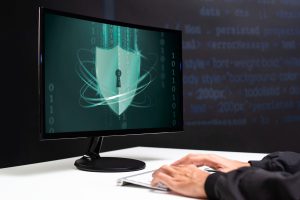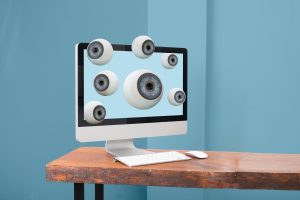Introduction – AR Development Tools
Augmented Reality (AR) development is creating digital experiences that overlay computer-generated content, such as 3D models, animations, text, or audio, onto the real-world environment in real-time. These digital elements are typically viewed through a device, such as a smartphone, tablet, AR glasses, or a specialized AR headset. AR development aims to enhance the user’s perception of the physical world by adding interactive and contextually relevant digital information.
AR development has gained significant attention and popularity due to its potential to create immersive and interactive experiences. Whether for entertainment, education, navigation, or enhancing real-world tasks, AR development continues to evolve and expand into new areas, offering exciting possibilities for developers and users alike.
Augmented Reality (AR) development has gained significant popularity in recent years, thanks to its potential for creating immersive and interactive experiences across various industries. Here are five tools, platforms, and libraries commonly used for AR development:
1. Unity 3D
Unity 3D is a powerful and widely used game development engine and platform that has gained popularity for traditional game development and for creating a wide range of interactive 2D and 3D applications, including augmented reality (AR) and virtual reality (VR) experiences. Unity offers a robust graphics and rendering pipeline that allows developers to create visually stunning 2D and 3D environments. It supports high-quality graphics, shading, lighting, and post-processing effects. It also supports JavaScript and Boo for scripting, although C# is the most commonly used language. Unity offers tools and libraries for artificial intelligence (AI) and pathfinding, making it possible to create NPCs (non-player characters) with advanced behaviors and navigation capabilities. Its flexibility, extensive feature set, and strong community support have made it a go-to platform for developers looking to create interactive and immersive content across various industries.
2. ARKit (iOS) – AR Development Tools

ARKit is a software framework developed by Apple for creating augmented reality (AR) experiences on iOS devices. It enables developers to build immersive AR applications that blend digital content with the real world, providing users with interactive and engaging experiences. ARKit provides face-tracking capabilities for iOS devices equipped with TrueDepth cameras (e.g., iPhone X and later). This enables the creation of AR experiences that interact with the user’s facial expressions and movements. ARKit supports persistent AR experiences, meaning that digital objects can be placed in the real world and will remain in their positions even after the app is closed and reopened. It provides a powerful and user-friendly framework for iOS developers to create immersive AR experiences that take full advantage of Apple’s hardware and software ecosystem.
3. ARCore (Android)
ARCore is a platform developed by Google for creating augmented reality (AR) experiences on Android devices. It provides a set of tools and libraries that enable developers to build interactive and immersive AR applications that blend digital content with the real world. Developers can use ARCore to recognize and track specific images or objects. When the camera identifies a recognized image, it can trigger the display of relevant AR content. ARCore integrates seamlessly with popular game engines like Unity and Unreal Engine, making it easier for developers to create AR experiences within their preferred development environment. It offers Android developers a robust platform for creating engaging and interactive AR experiences that can run on a variety of Android devices, enhancing the capabilities of smartphones and tablets.
4. Vuforia

Vuforia is an augmented reality (AR) development platform and software toolkit owned by PTC (formerly Qualcomm). It is designed to help developers create AR applications that can recognize and track real-world objects, images, and environments, allowing digital content to be overlaid with the physical world. Vuforia supports extended tracking, which allows virtual objects to stay anchored to the real world even when the tracked image or object moves out of the camera’s view temporarily. This provides a more seamless and immersive AR experience. Its strong image recognition and tracking capabilities, along with its integration with Unity, make it a popular choice for developers looking to create interactive and visually engaging AR experiences across various industries.
5. AR.js – AR Development Tools
AR.js is an open-source JavaScript library for creating augmented reality (AR) experiences that run directly in web browsers, without the need for users to install a dedicated AR app. AR.js is built on web technologies, making it accessible and convenient for web developers to incorporate AR features into their websites or web applications. The library is designed to be lightweight and performant, making it suitable for use on a variety of devices, including smartphones and tablets with limited processing power. It is often used for educational purposes, marketing campaigns, art installations, and interactive storytelling. As the capabilities of web browsers and web technologies continue to improve, AR.js is likely to remain a valuable tool for developers interested in creating AR content for the web.
6. Wikitude
Wikitude is an augmented reality (AR) development platform that provides tools and technologies for creating AR applications and experiences across a variety of industries. It is known for its robust AR capabilities and versatility. Wikitude incorporates SLAM technology, which enables AR experiences that can map and understand the user’s environment in real-time, without the need for markers or predefined objects. Similar to ARCore and ARKit, Wikitude supports extended tracking, allowing virtual objects to persistently anchor in the real world, even when the tracked object is temporarily out of the camera’s view. The platform offers analytics tools that provide insights into how users interact with AR content. This data can be used to optimize and improve the AR experience over time.
Create Your Own Website
“Highlights” is a lightning-fast and meticulously optimized WordPress theme designed for bloggers and online magazines, catering to various niche interests. It serves as the perfect solution for all your blogging requirements. With the integration of the Elementor live page builder, Highlights takes your website to a whole new level, offering cutting-edge page designs and advanced functionalities that were previously unheard of in the WordPress ecosystem. Additionally, it boasts Mega Menus, empowering you to effortlessly incorporate multi-column drop-down menus enriched with multimedia elements.
Conclusion – AR Development Tools
In conclusion, augmented reality (AR) development tools play a pivotal role in bringing digital content into the physical world, enabling developers to create immersive and interactive experiences across a variety of platforms and industries. AR development tools empower developers to create innovative and captivating AR experiences that blur the line between the digital and physical worlds. The choice of tools depends on project requirements, target platforms, and development expertise, and the dynamic field of AR development continues to offer exciting possibilities for both developers and users alike. AR development involves careful consideration of user experience design, ensuring that AR applications are intuitive, immersive, and user-friendly.
Interesting Reads:
10 Best Online Survey Tools for Conducting Surveys and Polls
5 Best Digital Comic Creation Software for Comics and Anime Creators
7 Best Travel Blogger Tools for Creating Travelling Experiences












